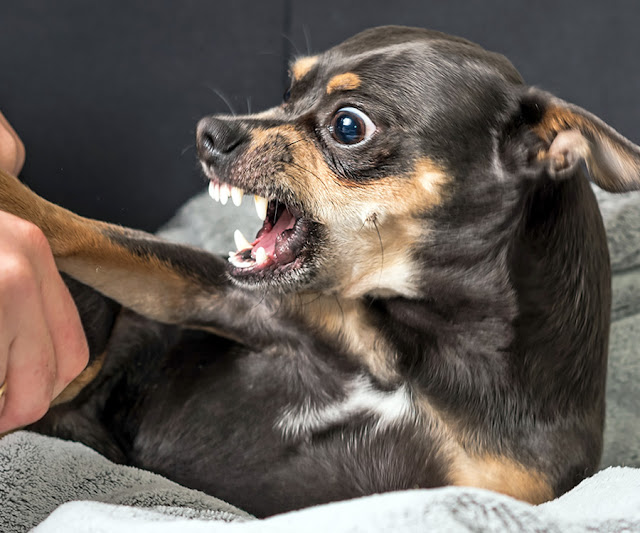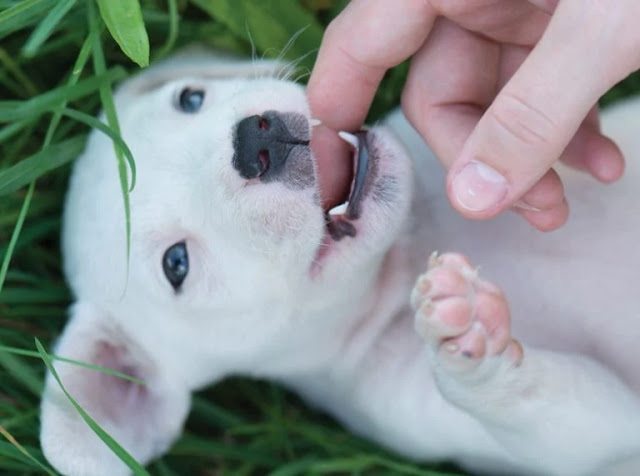how to teach a puppy not to bite?
Puppy Nipping Tips
Welcoming a new furry friend into your home is always an exciting time, but it can also come with some challenges, especially when it comes to their biting behavior. Puppies, just like human babies, explore the world around them using their mouths, which often leads to nipping or biting. While it may be cute when they are small, it’s crucial to teach them early on not to bite. In this article, we will provide you with effective methods and strategies to teach your puppy not to bite.
Puppy Teething Solutions
One of the main reasons why puppies bite is because they are teething. Teething is a natural process for puppies, and it can be quite uncomfortable for them. Similar to human babies, puppies experience discomfort and itchiness in their gums during this stage. As a result, they tend to chew and bite on everything they can find to alleviate their discomfort. To help your puppy during this phase, it’s essential to provide appropriate teething solutions.
Here are some tips to keep in mind:
- Provide a variety of teething toys specifically designed for puppies.
- Freeze teething toys to provide soothing relief for your puppy’s gums.
- Offer frozen treats or wet towels for your puppy to chew on.
- Ensure there are no hazardous objects within your puppy’s reach.
Puppy Biting Behavior
Understanding the reasons behind your puppy’s biting behavior is crucial in addressing and correcting it.
Here are a few common causes of puppy biting:
- Teething: As mentioned earlier, puppies may bite to alleviate the discomfort associated with teething.
- Exploration: Puppies explore their surroundings with their mouths, often resulting in a nip or bite.
- Attention-seeking: Puppies may resort to nipping or biting to get your attention.
- Playfulness: Puppies have an abundance of energy and may use biting as a form of play.
- Fear or anxiety: In some cases, puppies may resort to biting when they feel scared or anxious.
Bite Inhibition Training
Bite inhibition training is an essential part of teaching your puppy not to bite. The goal of this training is to teach your puppy to use a soft mouth and control the force of their bites.
Here are some effective strategies to incorporate into your bite inhibition training:
- Yelping: When your puppy bites you, let out a high-pitched yelp to mimic the sound of a sibling in pain. This will startle your puppy and teach them that biting causes discomfort.
- Redirecting: Provide your puppy with an appropriate chew toy whenever they attempt to bite. This will redirect their attention and teach them what they are allowed to bite.
- Time-outs: If your puppy persists in biting despite your attempts to redirect, you can give them a brief time-out in a designated quiet area. This teaches them that biting leads to loss of attention and playtime.
- Consistency: It’s important to be consistent in your training and reinforce positive behavior. Reward your puppy when they exhibit gentle play and refrain from biting.
Puppy Biting Training
In addition to bite inhibition training, there are other techniques you can use to teach your puppy not to bite.
Here are a few effective methods:
- Socialization: Expose your puppy to different people, animals, and environments from an early age. This helps them learn appropriate behavior and reduces fear-induced biting.
- Obedience training: Enroll your puppy in an obedience training class where they can learn basic commands and appropriate behavior. This will help establish your role as their leader.
- Positive reinforcement: Use positive reinforcement techniques such as treats, praise, and playtime to reward your puppy for good behavior. This encourages them to repeat the desired actions.
- Avoid rough play: Refrain from engaging in rough play with your puppy, as it may encourage biting behavior. Instead, opt for interactive toys or games that promote gentle play.
Stop Puppy Biting
If your puppy’s biting habit persists despite your efforts to train and teach them not to bite, it’s important to seek professional help. A certified dog trainer or behaviorist can assess the situation and provide guidance tailored to your puppy’s specific needs. They can identify any underlying issues that may be contributing to the biting behavior and offer effective solutions.
How to Teach a Puppy Not to Bite Hands
Biting hands can be a particularly concerning behavior, as it can lead to accidental injuries.
Here are some tips on how to teach a puppy not to bite hands:
- Yelp and withdraw: When your puppy bites your hand, let out a yelp to indicate pain and immediately withdraw your hand. This teaches them that biting hands results in the removal of attention and play.
- Offer alternative toys: Always have a suitable chew toy nearby. Whenever your puppy directs their biting towards your hands, replace your hand with the toy and encourage them to chew on it instead.
- Redirect with treats: Use treats to redirect your puppy’s attention away from your hands. Offer a treat as a distraction and reward them for gentle play.
- Consistency: Consistency is key in teaching your puppy not to bite hands. Ensure that all family members and visitors follow the same guidelines to avoid confusing your puppy.
How to Teach a Puppy Not to Bite Hard
Some puppies may have a tendency to bite hard, which can be unpleasant and potentially painful.
Here are a few methods to teach your puppy not to bite hard:
- Controlled playtime: Engage in controlled play sessions with your puppy to establish boundaries. If they bite too hard, immediately stop the play and withdraw your attention. Resume play only when they exhibit gentler play.
- Avoid physical punishment: Physical punishment can escalate the situation and lead to fear or aggression in your puppy. Instead, focus on positive reinforcement and redirecting their biting behavior.
- Offer chew toys: Always provide your puppy with appropriate chew toys to redirect their biting instincts. This helps them understand what they are allowed to bite and provides them with an alternative outlet for their chewing needs.
- Seek professional help: If your puppy’s biting behavior persists or becomes aggressive, consult a professional dog trainer or behaviorist. They can provide expert guidance tailored to your puppy’s specific needs.
How to Teach a Puppy Not to Bite Other Dogs
Teaching your puppy not to bite other dogs is essential for their socialization and well-being.
Here’s how you can address this behavior:
- Supervised socialization: When introducing your puppy to other dogs, ensure it is done under supervision. This allows you to intervene and redirect any inappropriate biting behavior.
- Observation and correction: Watch for any signs of over-excitement or aggressive behavior in your puppy. If they exhibit biting or aggressive tendencies towards other dogs, correct them with a firm “no” and redirect their attention to a positive activity.
- Positive reinforcement: Reward your puppy for appropriate behavior during interactions with other dogs. Treats, praise, and playtime can motivate them to exhibit gentler play and discourage biting.
- Give them space: If your puppy shows signs of fear or discomfort around other dogs, give them space and work on gradually introducing positive experiences with gentle, well-behaved dogs.
Remember, teaching a puppy not to bite requires patience, consistency, and positive reinforcement. It’s important to tailor your approach to your puppy’s individual needs and personality. By following these tips, you can help your furry friend develop good biting habits and ensure a harmonious relationship between you, your puppy, and others.













